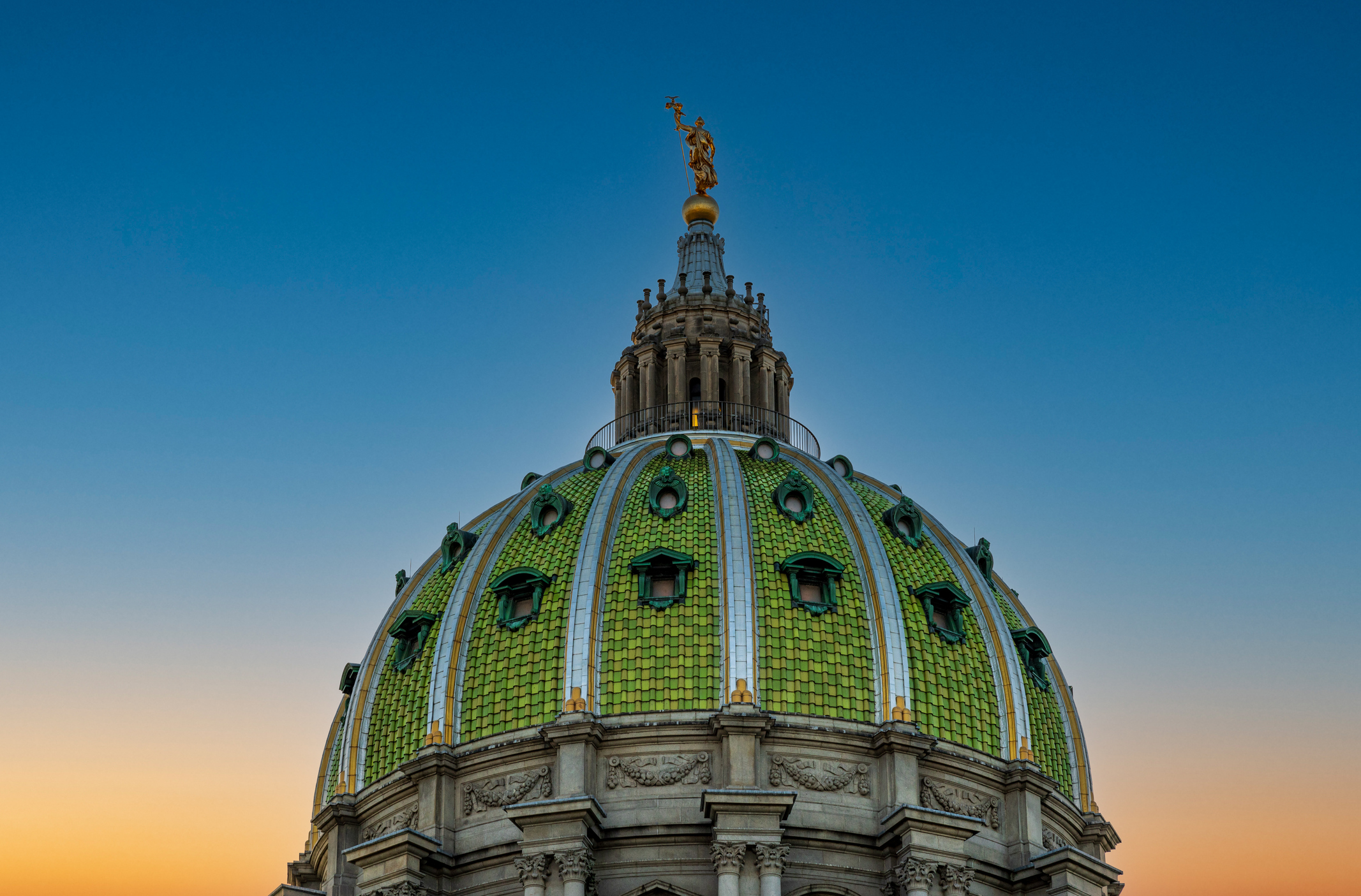New York City’s cost of living is 120 percent higher than the rest of the country. With 8.3 million people and an average home price of $501,000 (average home price in the United States is roughly $181,000), prices have begun to push city dwellers from Brooklyn and Manhattan into less-expensive areas that remain within close proximity to the city. As a result, portions of New Jersey—specifically North Jersey—have turned into prime real estate markets.
Many of these locations have transformed from working-class neighborhoods to destinations for young professionals. Economic realities and shifting demographics have fueled this migration. Millennials, with an interest in keeping their living space, workspace, and social lives in close vicinity to one another, have rebooted places like Hoboken, Newark, and Jersey City. However, the conflict between urban pioneers moving-in and long-time residence seeking affordability has pushed affordable housing into the 2017 gubernatorial debate.
Democratic candidate Phil Murphy has proposed using hundreds of millions of dollars from the Department of Justice’s Residential Mortgage-backed Securities (a multi-billion dollar reparations account funded by Wall Street fines) to pay off the state’s housing loans and then turning those newly paid-off homes into affordable housing. Republican candidate Kim Guadagno has pledged to cut property taxes in the Garden State, which has one of the highest in the country. Guadagno’s property tax ‘Circuit Breaker’ would cap the school portion of a homeowner’s tax bill at 5-percent of their household income.
It seems neither plan will stymie development in North Jersey. Although many have welcomed the change, some local officials have begun pushing back on plans to develop portions of North Jersey. Michael McPartland, the Mayor of Edgewater, a 3.5-mile stretch of land along the Hudson River, stopped a 2014 plan to develop 1,863 apartments in five high-rise buildings. McPartland said the proposal was far too big and would increase congestion while also straining the community’s limited infrastructure. Since 1990, Edgewater’s population has nearly tripled from 5,000 to 13,000, with most residents coming from newly developed regions in Northern New Jersey, like Hoboken and Newark. The developers have now taken the city of Edgewater to court.
With prices in New York City continuing to rise, many Manhattan and Brooklyn residents continue to seek more for less in North Jersey. Here are some cities in New Jersey harnessing real estate interest to improve their respective communities, while also protecting middle and working class residents from increased property taxes and rents.
Jersey City
In early 2017, the New York real estate blog Curbed voted Jersey City as the best neighborhood of the year. From 2010 to 2014, Jersey City experienced a 6-percent population increase, reaching 262,000. Many of these newcomers include millennials.
Mayor Steve Fulop claims 650 small businesses have opened over the past three years (many of them include bars and restaurants); and it makes sense: It’s a 10-minute train ride to the World Trade Center Transportation Hub in Manhattan, fueling Jersey City’s appeal among city workers. In 2016 there were more than 7,000 units of housing under construction with more than 19,000 already approved, more than any other city in New Jersey.
According to Trulia, an online real estate website, the median rent for one-bedroom apartments in the city’s four largest zip codes rose from $1,395 in October 2014, to $1,590 in September 2017. Jersey City’s housing affordability has emerged as a key issue in the 2017 mayoral race. Mayor Fulop has said the city will not support tax abatements for development projects that do not include affordable housing. Fulop had tried to include an ordinance requiring 20 percent affordable housing for any development receiving tax abatements, but many developers pushed back forcing the measure to stall.
Former City Attorney Bill Matsikoudis, Fulop’s mayoral challenger, has written a policy paper outlining affordable housing plans in Jersey City. His policy would require that all development plans include affordable housing, while also revising rent control laws for buildings with fewer than five units. Matsikoudis also wants to open a city office for affordable housing to help connect residents with vacant units.
Hoboken
Hoboken’s revitalization began in the late 1970s and early 1980s when the working class area used state funds to refurbish historic brownstone homes to improve housing options. With one of the shortest commutes into Manhattan and one of the smallest towns by area at 1.275 square miles, Hoboken has turned into a destination for Manhattan families seeking more space for their dollar. In 2016, the median value of a home cost more than $747,000, a 12-percent jump from 2015 to 2016. Since 2000, Hoboken’s population has increased 28 percent with roughly 15,000 newcomers in the past 16 years. Hoboken’s growth stems from corporations like Goldman Sachs and Ernst Young moving across the Hudson River to take advantage of lucrative Garden State tax credits.
To keep Hoboken a mixed-income community, city officials announced plans to create 115 affordable housing units in February 2017. Affordability requirements are based on income and household size. The announcement was born from an ordinance that requires 10 percent affordable housing for resident construction projects with over 10 units when an increase in density is provided. Hoboken has also adopted the Affirmative Fair Housing Marketing Plan and a guidebook for policies and procedures that placed eligible families into housings units.
“Dozens of new affordable housing units under construction throughout our city will help to ensure that Hoboken remains a vibrant mixed income community,” Hoboken Mayor Dawn Zimmer said after the affordability requirements were announced. “We have created procedures to make sure that these affordable housing units are available to those who need it most through a fair and open process.”
Newark
Once a symbol of urban decay, crime, and poverty throughout the 1980s and 1990s, New Jersey’s most populous city has turned into a vibrant metropolitan area.
In 2016, there were $2 billion in commercial and residential development with 1,500 units of housing under construction and another 4,000 in planning. After more than 60 years of population decline, Newark finally had a 1.7 percent increase in population in 2010, with subsequent increases the following years (Newark’s peak hit 438,000 in 1950, but dipped significantly in 1970 and 1980). Part of the revitalization stems from business investments by Prudential Financial and Goldman Sachs, which have invested $368 million and $500 million into the city, respectively.
Vacant lots across the city have now turned into real estate projects, including a $94-million mixed-use facility that houses a grocery store, retail shops, and residential space. A large scale department store built in 1901, which sat vacant for nearly 30 years, became a 160-room-luxury apartment space and home to Newark’s first Whole Foods after a $174 million investment. A few blocks away, a developer has partnered with Prudential to restore a 20-story tower built in 1929 for the New Jersey Bell Telephone Company. The building will now serve as a 260-unit rental apartment building.
While some city leaders have lauded the turnaround and future potential, Newark Mayor Ras Baraka has introduced policies to keep a city with one of the highest poverty rates in the country affordable. Baraka’s plan, titled Newark 2020, aims to hire 2,020 unemployed residents at full-time jobs with living wages over the next three years. The city has partnered with Prudential, RWJBarnabas Health, United Airlines, and Audible. In early October, The Newark City Council, with the Mayor’s support, approved an ordinance that ensures new projects with 30 or more residential units maintain 20 percent affordable housing.
“This is a groundbreaking step in housing development in Newark and a pioneering step for all of America’s cities,” Baraka said after the vote. “Once again, Newark is leading the way, defining to the nation how a city cares for its residents, and what a city should be.”
Weehawken
At 1.4 square miles and bordering Hoboken to the North, Weehawken has experienced a 25 percent increase in median home values over the past year, the largest increase in the Garden State. Like many other North Jersey communities along the Hudson River, Weehawken’s growth stems from home buyers priced out of markets in New York City, as well as Jersey City and Hoboken. The explosive growth along the city’s waterfront includes construction of a 589-rental unit building, 177 condominiums and two apartment buildings with more than 500 units. Subsequently, home values have reached a median cost of $757,000, compared to $488,000 in 2012. Real estate website Zillow projects that number to reach $809,000 by 2018. Historically, Weehawken’s residential communities were atop the 180-foot high cliffs known as the Palisades, but development below along the Hudson River waterfront has created a viable living space for those commuting into New York City via ferry or the Lincoln Tunnel.
The development has also lead to an increase in taxes for a community that has the highest bill in Hudson County. Moreover, a state judge ordered Weehawken to complete a new tax map in 2015. The suit says a failure to conduct a revaluation on older properties, while assessing new ones at market value has created an unfair tax burden on waterfront property owners. With a judge’s order, older residents could see their property taxes increase starkly, making affordable housing in Weehawken a looming issue.
Future Housing Trends in New Jersey
According to a 2017 report released by research advocates New Jersey Future, while the Garden State’s millennial population is declining, the 22-34 old demographic has fueled much of the real estate growth in places like Hoboken, Newark, and Jersey City. However, due to the cost increases, the report has indicated a potential for those areas to lose more millennials in the future. The report, and many others like it, finds millennials are more inclined to live in walkable, compact urban areas, compared to previous generations that settled for more suburban, car-focused locations. The NJ Future report urges the state to encourage more development of housing in compact or urban regions in an effort to retain younger people. Fortunately, The Garden State has many comparable locations that could support such housing. This shifting focus raises questions on what happens to regions with older residents where millennials aren’t interested in home buying. Some believe older residents could ultimately move into more compact areas with amenities or services. In any event, New Jersey’s urban and suburban landscapes could look drastically different in the coming years.
Latest News
Photo credit: iStock.com/sommart In 2025, state governments across the U.S. are advancing initiatives to improve administrative efficiency and modernize civil service, adopting tailored strategies to better serve residents. Recognizing the importance of adaptability, innovation, and [...]
Photo credit: iStock.com/BackyardProduction Governor Josh Shapiro delivered his 2025-26 budget address, outlining economic initiatives, public safety measures, infrastructure improvements, and education funding. His speech emphasized continued investment in key sectors to strengthen Pennsylvania’s [...]
Photo credit: iStock.com/StudioGraphic As technology continues to evolve, digital driver's licenses (also known as mobile IDs) are gaining traction across the United States. States are increasingly exploring legislative measures to modernize driver identification systems, enabling [...]
NetChoice and AI regulation In this episode of the Back in Session podcast, hosts Ryan Stevens and Ryan DeMara sit down with Amy Bos, Director of State and Federal Affairs at NetChoice, to discuss the [...]





Stay In Touch